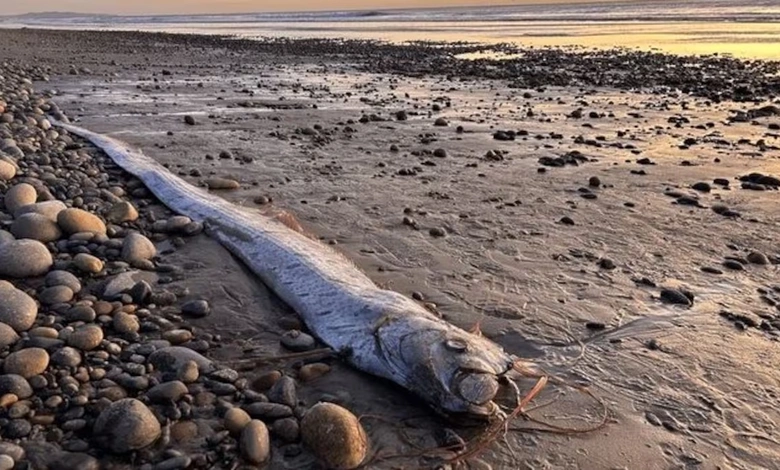Rare ‘Doomsday Fish’ Washes Ashore in Tasmania, Reviving Earthquake Myths

A rare oarfish, often dubbed the “doomsday fish” due to its association with natural disaster myths, was recently discovered on a beach in Tasmania, Australia. The sighting has reignited local and cultural speculation about its link to seismic events, despite scientific skepticism.
The large, silvery fish was found by Sybil Robertson while walking along Ocean Beach near Strahan on Tasmania’s rugged west coast. Initially mistaking it for a shimmering streak in the sand, Robertson noted eagles circling above, signaling something unusual. She estimated the fish to be at least three meters long. After sharing a photo on the Citizen Scientists of Tasmania social media page, she learned it was an oarfish, a deep-sea creature rarely seen near the surface.
Marine ecologist Neville Barrett from the University of Tasmania told that encountering an oarfish is “exceptionally unusual” because they typically inhabit depths of 150 to 500 meters in the open ocean. Known for their ribbon-like bodies, oarfish can grow up to eight meters and weigh as much as 400 kilograms. Their elusive nature and serpentine appearance have fueled myths, particularly in Japanese and Filipino folklore, where they are called “ryugu no tsukai” or “messenger from the sea god’s palace,” believed to surface as a warning of earthquakes or tsunamis.
The myth gained traction after 20 oarfish washed ashore in Japan before the devastating 2011 Tohoku earthquake and tsunami. Similar sightings preceded a 2017 earthquake in the Philippines. However, a 2019 study in the Bulletin of the Seismological Society of America found no definitive link between oarfish appearances and seismic activity, attributing such events to coincidence or environmental factors like illness or disorientation.
Marine biologist Jorja Gilmore, who spotted an oarfish in 2022 while leading snorkelers on the Great Barrier Reef, described the encounter as “bizarre, like something from the deep sea. Oarfish are not strong swimmers, often floating vertically to blend into their surroundings, which adds to their mystique.
While the sighting has sparked curiosity and concern, scientists emphasize that oarfish appearances are likely due to natural causes rather than omens of disaster.




